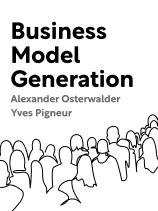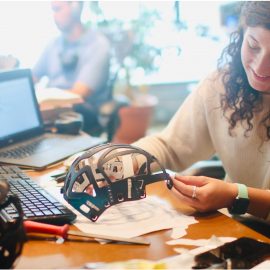

This article is an excerpt from the Shortform book guide to "Business Model Generation" by Alexander Osterwalder and Yves Pigneur. Shortform has the world's best summaries and analyses of books you should be reading.
Like this article? Sign up for a free trial here .
What is the bait-and-hook business model? How do bait-and-hook businesses make a profit?
The bait-and-hook business model is where a business sells the main product (for example, coffee machine or printer) at a low cost in order to generate profit by selling complementary products/refills/top-ups (for example, coffee capsules, printer ink) at a high price. In effect, businesses choose to initially make a loss in the hope of making a future profit from ongoing purchases.
In this article, we’ll take a look at the concept behind bait-and-hook business models and how they generate revenue.
What Is the Bait and Hook Business Model?
Bait-and-hook business models are characterized by cheap or free products that provide customers with instant gratification but create demand for future products and services. Although businesses initially lose money, they can easily cover the costs and make a profit from the recurring income they receive from these transactions. For example, coffee machines that require specific capsules to function can sell at a loss since customers will inevitably pay for the capsules so that they can use the machine.
In their book Business Model Generation, business innovation experts Osterwalder and Pigneur suggest the following layout for this type of business model:
| Customer Groups | Focus on large customer groups. |
| Value Offer | Value comes from attracting customers with an inexpensive or free offer, which will lead to a necessary follow-up product or service. |
| Touchpoints | Depends on the product or service. |
| Interactions | Interactions need to encourage customers to have no choice but to purchase follow-up products or services. |
| Profit Sources | Profit will come from multiple purchases of the follow-up product or service. |
| Resources | Product patents, as well as brand equity—brand reputation and familiarity—will be the biggest resources. |
| Critical Actions | Focus on the production and delivery of follow-up products & services. |
| Network | Focus on developing partnerships that will make the production and delivery of follow-up products and services more efficient. |
| Expenses | The main expenses will be the subsidization of the initial value offer, as well as the production of the follow-up products and services. |
Reversing the Bait and Hook Model
Business models focused on continuing purchases generally offer the premium product at a low cost and its complementary product at a high price. In doing so, businesses typically choose to make a loss. However, this gamble doesn’t always pay off—savvy buyers may calculate the ongoing expenses of owning such products and choose not to take the bait. The result is that businesses may end up making an overall loss from this model.
Many businesses have found the reverse of this model to be even more successful—they offer the premium product at a high price but keep the complementary product at a very low price. In other words, customers pay a high price upfront so that they can receive long-term benefits from low price add ons.
For example, Apple products require a high degree of investment from consumers. However, consumers are happy to pay the price to enjoy low-priced music and apps at affordable prices. Similarly, Amazon’s Kindle devices are also sold for high prices, but consumers benefit from accessing millions of free or low-priced ebooks. If both Apple and Amazon Kindle continue to provide access to low-price complementary products, consumers will be willing to pay high prices for their premium products.
Unlike the original model, businesses do not suffer a loss when customers fail to purchase complementary products. Further, even though the complementary products offer a low profit margin, they still provide businesses with ongoing and predictable revenue streams.

———End of Preview———
Like what you just read? Read the rest of the world's best book summary and analysis of Alexander Osterwalder and Yves Pigneur's "Business Model Generation" at Shortform .
Here's what you'll find in our full Business Model Generation summary :
- The nine elements that make up any successful business model
- Different ways you can combine these elements to create business model patterns
- Techniques you can use to generate innovative ideas






